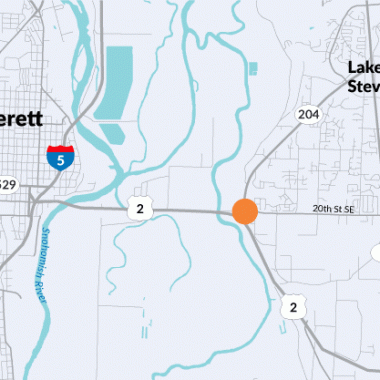Planning study news
The interchange justification report was completed and delivered to the Washington State Legislature in September 2018. The study will assist the Legislature's plans and decision making for future projects to improve the US 2, SR 204, and 20th Street Southeast interchange.
Purpose
The population of Snohomish County has more than doubled since 1980 and is expected to gain another 200,000 residents by 2035. This growth will add pressure to the county’s high-traffic routes, including the US 2, SR 204 and 20th Street Southeast interchange, which already experiences severe congestion during peak commute times. These backups can sometimes spill over onto other highways and surface streets, creating additional congestion.
In 2016 the Washington State Legislature directed WSDOT to study potential improvements to the US 2, SR 204, and 20th Street Southeast interchange near Everett. The summary was provided to the Legislature in mid-September.
In December 2016, WSDOT formed a project support team of representatives from Snohomish County, Community Transit, and the cities of Lake Stevens, Everett, Snohomish, Monroe and Marysville. This team worked to identify existing issues and potential future improvements at the interchange. The project support team provided feedback and direction on the future potential improvements throughout the duration of the study.
In spring 2017, the public had an opportunity to provide input on issues and needed improvements through an online survey. Additionally, WSDOT provided updates to the public through the community briefings, gathering additional community input.
WSDOT used findings from the support team and A public survey to develop an Interchange Justification Report. These reports are studies required by the Federal Highway Administration to support changes to highways.
Public involvement
Driver and community input was incorporated into the final study provided to the Legislature, ensuring that potential future improvements work for highway users.
Stakeholders
Key representatives from various agencies and jurisdictions provided feedback and direction to ensure that any potential future improvements reflect the needs of the area and are coordinated with local agency road projects and improvements.
Future decisions
At the end of this study, we provided a list of unfunded projects that the Legislature can use in the future to make decisions about the interchange.

